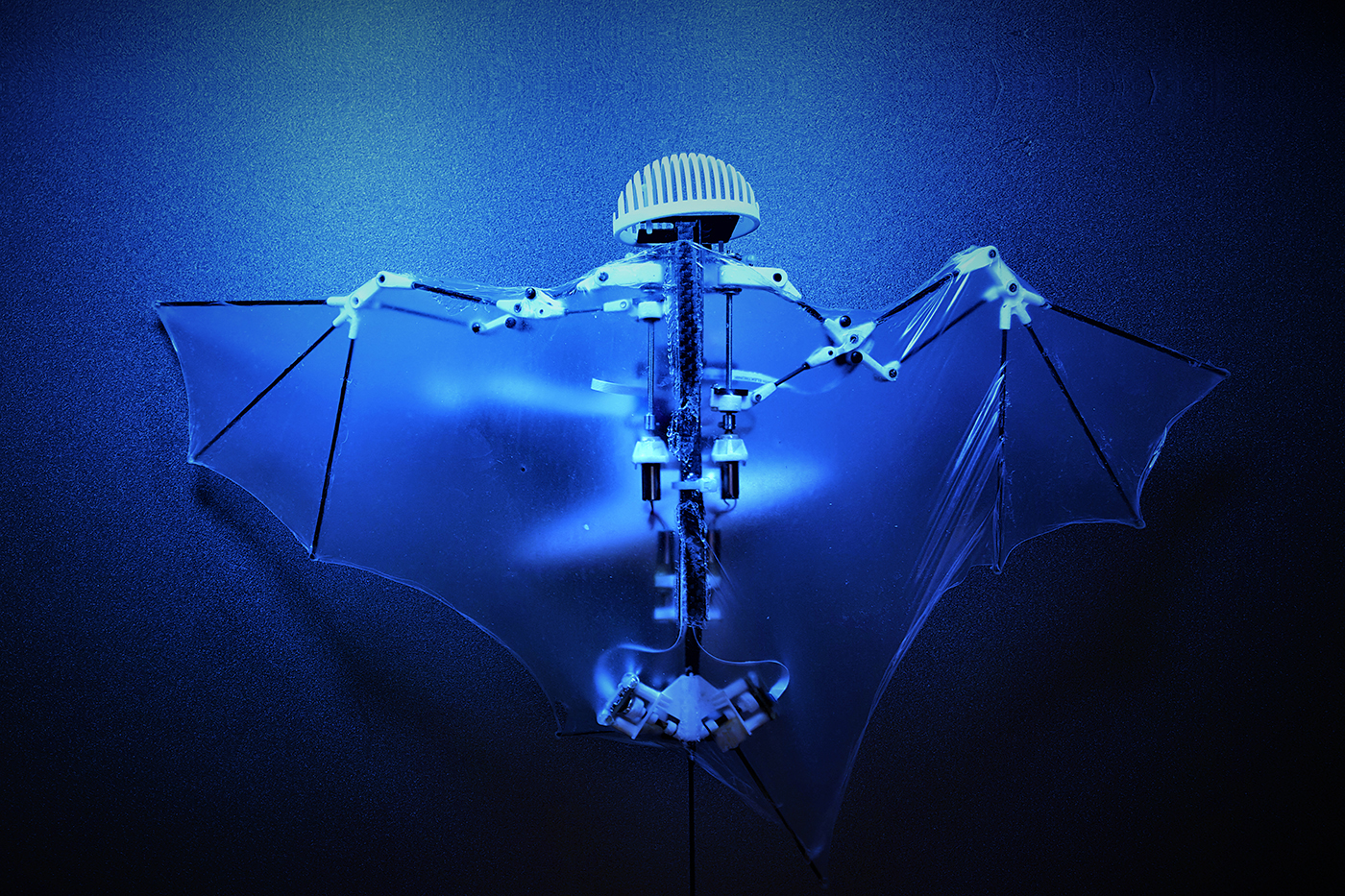Mesmerized by how bats ‘dance in the air,’ this new Northeastern professor built a robotic one

One moment, Alireza Ramezani was gazing up at Egyptian fruit bats soaring through the air. The next, he was cradling one in his hands.
Ramezani, a roboticist, was in the process of building a drone that mimics a bat’s movements. Bats, he said, have arguably the most sophisticated flight mechanisms of any animal. So he visited researchers at Brown University who are studying bat flight, in hopes of learning everything he could about the animals.
He was amazed by the contrast between how fragile bats can be at rest but then how powerful they are in flight.
If robotic systems can hang from structures, they can harvest solar energy and once they’re fully charged they can fly around again. It sounds futuristic, but we’ll see how we can accomplish this.
Alireza Ramezani, Assistant Professor of Electrical and Computer Engineering
“They can literally dance in the air,” said Ramezani, who joined Northeastern University this fall as an assistant professor of electrical and computer engineering. “This has been fascinating for me, how they play with the laws of aerodynamics to change their body morphology.”
Ramezani said that day not only erased any preconceived ideas that bats are merely scary animals found in haunted houses. It also inspired him to better understand the complex mechanisms that allow bats to fly. “It captured my attention and made me more determined to look into this problem to create robots that can copy that motion,” he said.
After three years of work, Ramezani and his collaborators created Bat Bot, which is an autonomous drone that can flap its wings, glide, make sharp turns, and swoop down. It was unveiled in the journal Science Robotics in 2017.
Bats have more than 40 joints on their wings, more than birds and other flying creatures. This gives them greater agility, flexibility, and maneuverability in the air. Ramezani said these traits make bats an ideal model for designing the next generation of flying robots. These types of drones, he said, would be particularly useful for surveillance, whether inside a building or outside monitoring traffic patterns or airport security.

With a 1-foot wingspan, a Bat Bot can navigate tight spaces that larger drones can’t. It also only weighs slightly over 3 ounces, and its carbon fiber skeleton is covered by a soft, super-stretchable silicon-based membrane. Unlike today’s drones, which have fast rotating blades, a bat drone would be unlikely to cause much harm if it accidentally hit a person.
Ramezani worked on Bat Bot as a postdoctoral research associate, first at the University of Illinois at Urbana-Champaign and then later at the California Institute of Technology. Now, he said he and his doctoral students at Northeastern will build an advanced version of the bat drone that perches and hangs upside down like a bat. He’s also planning to add on-board cameras and sensors that collect all kinds of data about the environments where the drone flies.
He envisions future versions of the flying robot being integrated with the so-called internet of things. He said one or more of these drones could scan city streets or a busy airport, and the data collected and immediately shared with people on the ground who are trying to ease traffic congestion or assess potential safety threats.
“If robotic systems can hang from structures, they can harvest solar energy and once they’re fully charged they can fly around again,” he said. “It sounds futuristic, but we’ll see how we can accomplish this.”





